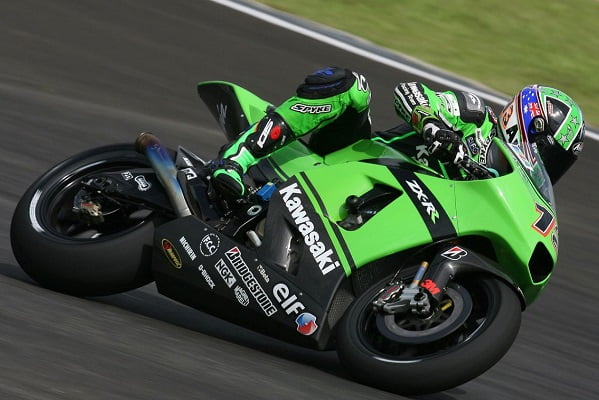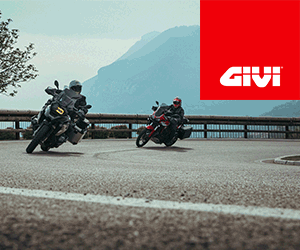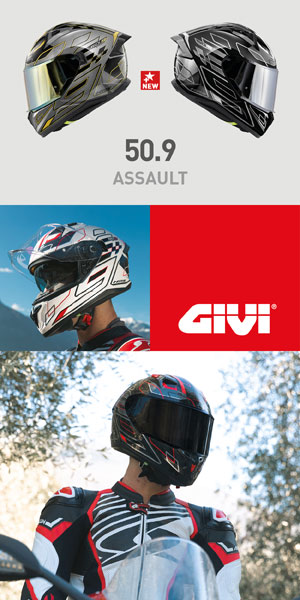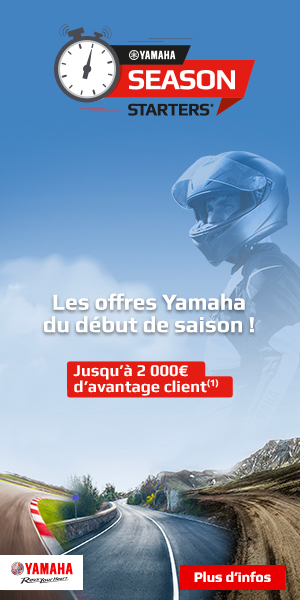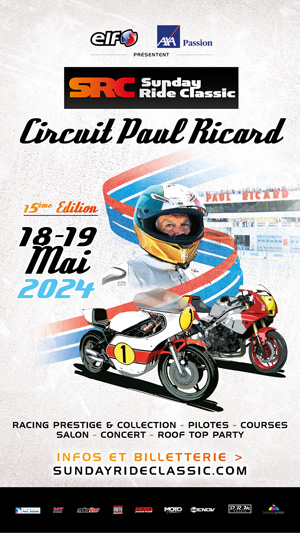As specified in the part XNUMX of this article of this file, on January 9, 2009 Kawasaki announced its departure from the Grands Prix. The Spanish organizer Dorna threatened legal action for breach of contract, with a substantial demand for damages. Kawasaki gave in.
In 2009, the Hayate team (which in Japanese means "Hurricane") was rolling Marco Melandri in MotoGP (from 2010, it changed its name to Forward Racing). It was led by Ichiro Yoda, who had been director of Kawasaki Racing and previously project leader at Yamaha since the OW61 500 of Kenny Roberts in 1983 until the YZR-M1 of Max Biaggi in 2001, while in 2010 Hayate's team manager was Andrea Dosoli.
Anecdote: Andrea Dosoli earned the nickname of Grave Digger (the Gravedigger) because of the many teams he had passed through and which subsequently collapsed, such as Kawasaki MotoGP at the end of 2008, Hayate Racing at the end of 2009, as well as the official Yamaha Superbike team in 2011. 2012 saw him join the team BMW factory, with very good results in fact. But it was Auf Wiedersehen at the end of the year. He spent the 2013 season at BMW Motorrad Italia as technical director, and this time it was arrivederci who greeted the end of the team. Without him being responsible each time obviously. On the other hand, the “black cat” side…
During the 2009 MotoGP World Championship, the team had as its only rider Marco Melandri, who had already signed an agreement with Kawasaki to compete for the brand in that year's championship. The Japanese manufacturer, however, officially withdrew from the category on December 30, 2008. On March 1, 2009, the arrival of the Hayate team in the premier category was announced. She rode a Kawasaki ZX-RR developed in previous years, and painted black. It felt a bit funeral-ish, so wasn't entirely inappropriate given the circumstances. Melandri finished tenth on Kawasaki in the final standings of the 2009 Championship, then Kawasaki withdrew from MotoGP. Temporarily? Definitely ?
Following these difficult relationships with Dorna, Kawasaki invested in the other World Championship, the one reserved for Superbikes and managed by the brothers Maurizio and Paolo Alberto Flammini. To everyone's surprise, the owner of these two companies, the investment group Bridgepoint (through its subsidiary in front), decided to merge the two championships which would now be managed by Dorna. Imagine Kawasaki's astonishment to see the Italians leave and the Spaniards arrive!
Kawasaki has always participated in the SBK world championship, with its official Australian rider from the first edition. Rob Phillis who finished in seventh place in the general classification. The American Scott Russell won the title in 1993 and the Greens built up quite a good track record in this discipline, as well as in Supersport. The economic situation then evolved, quite clearly in favor of the Grands Prix. It is important to know that among Japanese manufacturers, the costs of GPs are borne by the factory, and those of Superbikes by European importers. For European manufacturers, the system is entirely different, with Ducati which can count on subsidies from an American tobacco company, while Aprilia and BMW rent their motorcycles to those who want them.
Kawasaki has completely shaken up this order of things by transferring its MotoGP budget to Superbike. The enormous WSKB budget is now taken care of directly by the factory, which approves motorcycles at every turn, while its opponents have to be content with the same model for long periods. Thus, a brand new ZX-10R was approved at the beginning of 2016, to be replaced by a ZX-10RR at the beginning of 2017. Faced with this heavy artillery, the other Japanese manufacturers are counting on the teams to which they entrust their interests, such as the dealers. ten Kate for Honda and Crescent at Yamaha.
These dealers are extremely competent and experienced, but how could they fight against a factory which has comparatively gigantic resources? Let's take an example: electronics, which unlike Grands Prix is not unique, but designed and manufactured by each manufacturer (as in GP before). In World Superbike, each manufacturer manufactures its own “Superbike Kit System” available for sale for 8 euros and manufactured in at least 000 units (article 50 of the regulations, below in the appendix). According to you, how many engineers and electronics workers are there in the racing department of the ten Kate and Crescent dealerships, compared to the 2.4.9.1 employees of Kawasaki Heavy Industries?
All the other major manufacturers have decided to invest most of their competition budget in MotoGP, because the benefits of this category are clearly superior overall compared to those of all the others. " Out of Valentino no salvation.” Kawasaki has chosen to dominate the World Superbike by offering itself technical superiority and the best rider. The steamroller is on, and the only question is: How many consecutive titles Jonathan Rhea and Kawasaki will they add to their list of achievements if Johnny does not get injured?
Appendix: The part of the FIM regulations which concerns electronics in Superbike:
2.4.9.1 The DWO/FIM approved “Superbike Kit System” must meet the following:
- a) The system must be a complete package including all electrical/electronic parts not supplied on the approved motorcycle required for full operation of all strategies – excepting the wiring harness.
- b) Only the machine manufacturer or one approved partner can submit a single system for approval.
- c) The total price of the complete system including ECU, dashboard/ display, all additional sensors essential for full operation of all strategies, IMU, software, enable codes, datalogging, analysis software, ECU “tuning” or “setting” software, datalogger , download/connection cable, example harness design, manual for use, (not a complete list), is €8000 Euro (excluding taxes). Data Logging only sensors are excluded from the price cap.
- d) There must be at least 50 Superbike Kit Systems (currently approved system) available worldwide per season, if ordered, through authorized distributors or dealers. The Superbike Kit System must be marked and considered as for race use only.
- e) Lead time less than 8 weeks.
- f) The ECU must be from the FIM/DWO Approved Superbike ECU List.
- g) The following sensors may be used:
- Throttle position (multiple)
- Map sensor, Map Sync (pressure sensor on the intake port used to synchronize the engine during the start)
- Airbox Pressure
- Engine pick-ups (Cam, crank) (Crank trigger may be replaced)
- Lambda
- Exhaust Valve / Motor position / feedback
- Twist grip position
- Front speed
- Rear Speed
- Gearbox output shaft speed
- Gear position
- Gear shift load cell
- Front brake pressure
- Rear brake pressure
- oil pressure
- air pressure
- Water temperature
- air temperature
- IMU (various signals)
- Transponder / Lap time signal
- Knock Sensor
- Fuel pressure
- Oil temperature
- Fork position
- Shock position
- Tilt/Tip-Over Switch
- GPS Unit
- Rear tire temperature (External) (Multiple)
- Rear TPMS Monitor (Temperature and Pressure)
- h) Sensors on the above list that are originally fitted to the standard machine may be replaced with alternative sensors, however they must be included in the Superbike Kit System and inside the total price (Art. 2.4.9.1.c).
- i) 2 further additional sensor channels (that are not included in the above list) may be added to the machine.
- j) Redundant/doubled sensors are allowed but must be included in the Superbike Kit System if they are required for safe operation.
- k) Analogue/Logic to CAN sensors are allowed.
- l) The sensors originally fitted to the approved machine and used as approved, will not be included in the price limit.
- m) When the following sensors are damaged through crashes they may be replaced by parts of the same function but do not have to be the same specific part from the Superbike Kit System:
- i) Fork and Shock Potentiometers
- ii) Brake pressure sensors
- iii) Gear shift sensor (but must remain the same type included with the kit – ie Load cell, switch etc.)
- n) Before the final pre-season test, before the mid-season test(s) or at the season midpoint and within three hours of the last race of the season any firmware / software updates being used by the factory teams must be made available to all same manufacturer customer WSBK teams (more frequent updates are allowed).
- o) The manufacturer must provide current strategies but may remove the ability to change or see these settings, base mapping must be provided.
- p) Only firmware and software from the FIM/DWO approved software and firmware list may be used.
- q) Factory Teams may use any development firmware and software which will be made available to teams according to the update schedule.
- r) Any essential hardware updates required must be made available to customer teams from the same race as the factory team and available free of charge to update those Superbike Kit Systems purchased in the current season.
- s) Transponder is NOT included in the “Superbike Kit System”
- t) The selection of logged channels is free.
- u) Coils and coil drivers are free and must be included in the Superbike Kit System if altered.v) No other external ignition/injection controllers, traction control modules or other active expansion modules or calculation units may be fitted unless included in the Superbike System .
- w) The factory team must use the current seasons “Superbike Kit System”. No backdated parts may be used.
- x) Superbike kit systems remain approved for 3 seasons (first season inclusive).
Title photo: Anthony West (© Kawasaki)










